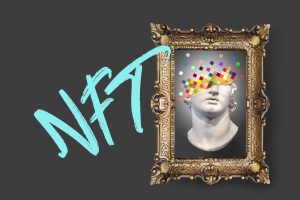NFTs (Non-Fungible Tokens) have dominated the world of digital art, fashion and collectibles in recent years. However, the NFT market is facing a tough time with a significant drop in sales, the worst in nearly a year. In this article, we will analyze the possible causes behind the decline in sales and the future outlook for the NFT market.
The NFT boom
Over the course of 2020 and early 2021, NFTs have experienced tremendous growth in popularity. Interest in these unique and indivisible blockchain-based tokens has exploded through adoption by artists, content creators, celebrities, and investors. Some of the notable events during the NFT boom include the sale of Beeple’s digital artwork “Everydays: The First 5000 Days” for $69 million and the popularity of the CryptoPunks, whose sales have reached extraordinary numbers.

The decline in sales
Despite the initial success of NFTs, the market has recently experienced a sharp slowdown. NFT sales fell sharply, hitting an all-time low in nearly a year. Several factors may have contributed to this decline:
- Market Saturation: The exponential increase in the number of NFTs created and offered for sale may have led to a market saturation, making it harder for buyers to find valuables and reducing their interest in NFTs.
- Environmental Concerns: The environmental impact of the blockchain and cryptocurrency mining processes has raised concerns among users and investors, which may have impacted their perception of NFTs and their willingness to participate in the market.
- Volatility of Cryptocurrencies: The volatility of cryptocurrencies, which are closely related to NFTs, may have discouraged investors and buyers from participating in this market.

Despite the recent decline in sales, the NFT market may still have a promising future. While some analysts believe that the decline in sales could signal the end of the NFT boom, others argue that the market is simply stabilizing after unsustainable growth. Additionally, the adoption of greener blockchain technologies and increased regulation of cryptocurrencies could help boost confidence in the NFT market.

Additionally, the adoption of greener blockchain technologies and increased regulation of cryptocurrencies could help boost confidence in the NFT market. However, it is still too early to tell whether this represents the end of the
NFT phenomenon or simply a moment of pause and stabilization. Several challenges, such as market saturation, environmental concerns and cryptocurrency volatility, may have contributed to the decline in sales. However, innovation in the field of blockchain technologies, the regulation of cryptocurrencies and the development of green solutions can help revive the sector.
Going forward, the success of NFTs will depend on the ability of industry players to adapt to these challenges and find new applications and opportunities for non-fungible tokens. This could include integrating NFTs into industries such as gaming, entertainment, fashion and music, as well as digital art. In addition, it will be important for NFT developers and creators to focus on creating products of quality and lasting value to keep buyers and investors interested over time.








